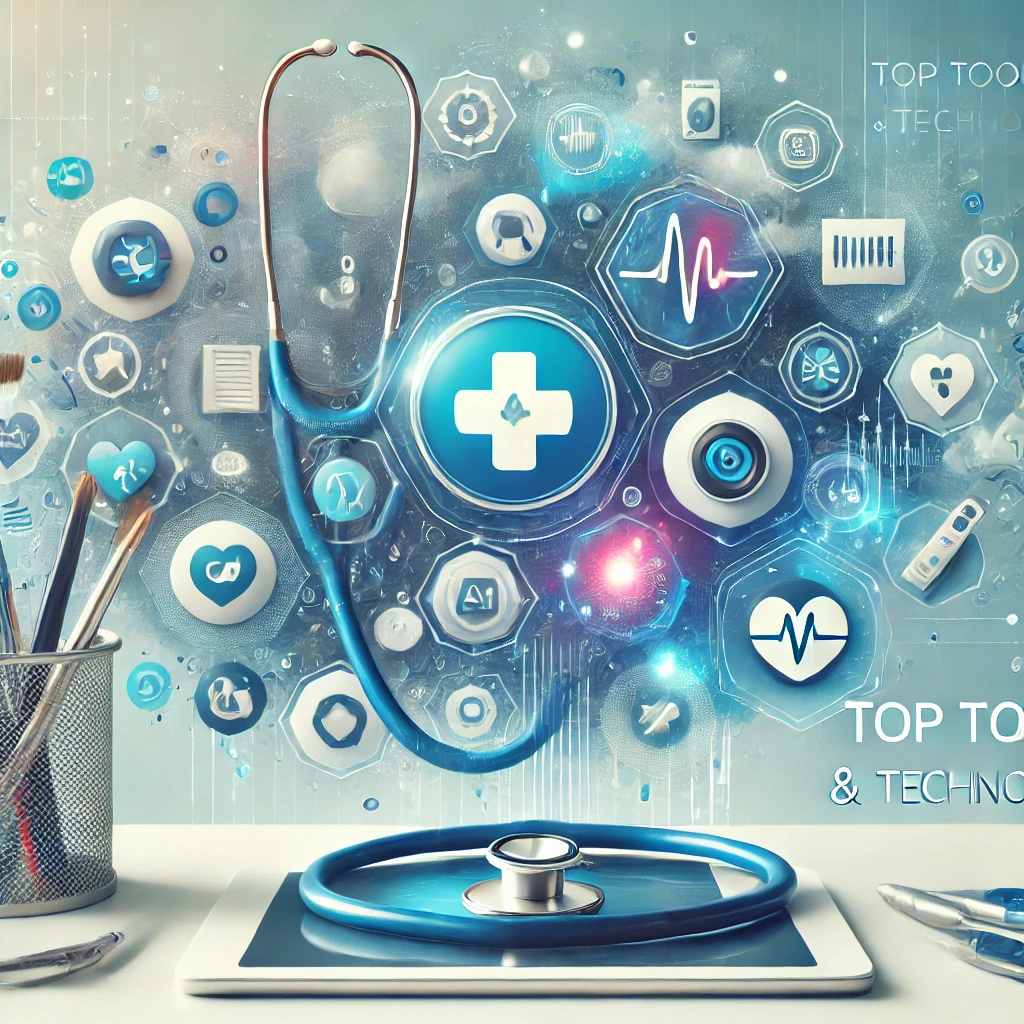With increased integration of advanced tools and technologies, the healthcare industry is considering a sea change. These innovations help healthcare assistants in performing their jobs related to patient care as well as administration, thus making their tasks easier and more effective. Therefore, herein, detailed explanations of the best tools and technologies being implemented for a healthcare assistant today are discussed.
1. Electronic Health Record (EHR) Systems
EHR systems certainly lie at the core of modern healthcare delivery. They enable healthcare assistants to access and update instant patient records, eliminate paper-based practices that often result in errors, and also communicate better with their colleagues. Leading platforms like Epic, Cerner, and Allscripts for EHR improve the management of patient information for faster healthcare services.
2. Telemedicine Platforms
Telemedicine has been a godsend for healthcare assistants. Such tools as Teladoc Health, Amwell, and Doxy.me let them schedule and manage virtual appointments, assist patients in case of some technical issues while in teleconsultations, and communicate between the patient and the healthcare provider. Telemedicine removes barriers due to geography and ensures timely treatment.
3. Remote Patient Monitoring (RPM) Devices
Healthcare assistants monitor patients’ health while the latter is away from the traditional setting of a clinic or hospital through RPM devices. Some of the common technologies used in RPM include:
Wearable devices, including but not limited to Fitbit and Apple Watch, monitor vital signs including heart rate and oxygen saturation—glucose monitors for diabetic patients. Blood pressure cuffs can be connected with mobile apps. These devices supply real-time data to healthcare assistants so that they may raise alerts quickly to medical teams about possible health issues.
4. AI-Powered Chatbots and Virtual Assistants
Artificial Intelligence is changing the face of patient interaction. The likes of chatbots, including Florence, and other tools like Google’s AI-powered Care Studio, support healthcare assistants to:
- Respond to patient inquiries
- Medication reminders.
- Automation of administrative procedures. Such includes appointment scheduling. Efficiency brought about by the tools reduces work, hence an improvement in the patients’ satisfaction with the provided services.
5. mHealth Applications
Mobile application utilization has brought a revolution to both the health provider and the patient. Examples include MyChart, Medscape, and MediSafe; through some of these resources, the assistant is allowed easy access to patients’ records, medication management, and education on updates about medical practice, therefore improving communications between the patients and healthcare professionals.
6. Digital Training and Simulation Tools
Digital training platforms and simulators go a long way in helping healthcare assistants in their work and are available in:
- Virtual reality simulations, virtually practicing simple medical procedures.
- Compliance and skills development tools include HealthStream and Relias. These technologies maintain healthcare assistants who are competent and confident in their work.
7. Robotics and Automation
Robotics is finding its place within healthcare facilities. Robots help healthcare workers by:
- Automation of simple, repeat tasks, including delivering medication and disinfection.
- Assistive lifts; transportation of patients relieves assistants from physical demands. Examples include robots like TUG developed by Aethon and supportive robotic exoskeletons aiding in mobility.
8. Cloud-Based Collaboration Tools
Main cloud technologies at work today amidst healthcare team tools are Microsoft Teams, Slack, and Google Workspace. Each enables the following features for the healthcare assistants:
- Document share and access with security.
- Coordinate with all members within departments and across departments.
- Ensure effective communication, particularly when working in large environments.
9. Medication Management Systems
The technological automated medicine dispensing-like Omnicell and Pyxis aids and provides easy access to medication. These tools:
- Minimize the occurrence of drug dispensing or administration errors
- Enhance compliance in taking dosages as prescribed
- Ensure health assistants can track stock easily
10. Data Analytics and Reporting Tools
- Data Analytics platforms such as Tableau and Power BI enable healthcare assistants to:
- Generate high-level reports on patient outcomes.
- Analyze patient care trends.
- Enhance workflow and resource utilization. This encourages evidence-based decision-making at the bedside level.
Advanced integration of various tools and technologies takes the role of a healthcare assistant to a completely new dimension. Adoption of such novelties would support the health professional in the management toward the improvement of patient outcomes, reduction of administrative burdens, and creation of more efficient workflows for them. In this way, it has also become really necessary that assistants in healthcare may know about changes in technology and developments taking place around the medical field to increase the output with quality healthcare services.

